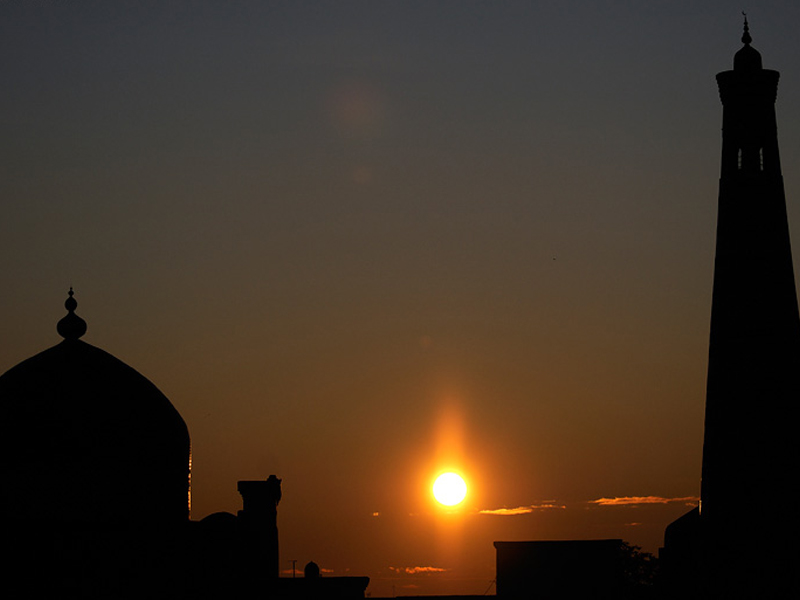



Attraction

Recreation

Geographical coordinates: 41°22'42" N 60°21'50" E
Automobile codes: 90
None of the other Central Asian cities have whole parts of their ancient city, such as the Ichan-kaleh district in Khiva, which have been preserved in such a good condition. It is a historical and architectural reservation which provides an example of what a feudal Central Asian city used to be like. Hardly any of the structures dating back to the first Khan of Khiva have survived to our times. But of those which have reached us, the most well known is the modest fourteenth century mausoleum of Sheikh Said Allauddin, famous for its beautiful majolica tomb. Evidently, the earlier mausoleum of Pakhlavan Mahmud, the poet and national hero who died in the first quarter of the fourteenth century, was also very modest. Soon afterwards, the construction of the necropolis of the Khiva rulers was begun beside the poet's mausoleum, and the tombs of the earlier rulers were transferred there.
In 1825, the interiors of all the chambers of the Pakhlavan Mahmud complex were faced entirely with majolica tiles, with typical Khiva patterns and the domes were covered with turquoise tiles, while the portals were also decorated with majolica. The square by the main thoroughfare of Ichan-kaleh was flanked by the Juma mosque, with its minaret and several madrassahs nearby.
The architecture of the Juma Friday mosque, built in the eighteenth century, is very unusual. Blank brick walls, devoid of any openings or embellishments, surround the building, which extends 55 meters in one direction and 46 meters in the other. The flat ceiling is supported by 212 wooden columns, of which 20 are very old and decorated with unique carvings.
One of the busiest parts of Khiva was its western gates, the Palvan-Darvaz. Nearby, the Anush-khan baths and the single story madrassah of Khoja Amerdibey were built in the seventeenth century.
From 1804-1812, opposite the Khoja Amerdibey Madrassah, another madrassah was built, the two-storey Kultug Murad-inak, which had 81 khujras (cells) and was one of the biggest buildings in Khiva.
In 1806, a long gallery of shops with domed summits was built adjacent to the Palvan-Darvaz Gates. It was around these Gates, which marked the end of the liveliest thoroughfare in the city, that the trading life of Khiva centered during the reign of Alla-Kuli-khan (1825-1842).
Not far from the Gates, during the same period, under Alla-Kuli-khan, a caravanserai was built, which protruded beyond the walls of Ichan-kaleh. A closed-in gallery passage was added to its main facade (tim). In the entire complex of structures next to the eastern Palvan-Darvaz Gates, the AlIa-Kuli-khan Madrasah is conspicuous with its fine portals.
From 1830-1838, the palace of Alla-Kuli-khan, the Tash-khauli, was built. It consists of several buildings for residential and official purposes, united by a number of courtyards. Among them are the harem, the mihmankhaneh, or khan's reception hall, the arzkhaneh, the court of justice, and a number of subsidiary and service quarters and passages. Thus, the complex around the Palvan-Darvaz Gates was completed: the gallery of Palvan-Darvaz, the Alla-Kuli-khan Madrasah, a tim, and a caravanserai on the one side; and on the other side of the square the Tash-khauli and the Kultug Murad-inak Madrasah.
By the western gates (no longer in existence) stands the Kunya-Ark, surrounded by a crenellated adobe wall - an ancient fortress with what remains of the Akshikh-baba castle, which once served as the nucleus of the city.
Other complexes were formed at Ichan-kaleh. To the south of the Kunya-Ark, the Amin-khan madrassah was put up in 1851 - 1852, and to the east of Kunya-Ark, the Said Muhammed Rakhim-khan II Madrassah was built in 1871; the two structures comprising an architectural ensemble around a square.
The Amin-khan Madrasah was the biggest in Khiva. The minaret, which was never completed, has a diameter of 14.2 meters and was built only to a height of 26 meters. Because of this, it was named the Kalta-minar (the short minaret). The vizier Islam Khoja built the tallest minaret in Khiva. The minaret dominates the rest of the buildings in Ichan-kaleh (it is 50 meters high).
The above-mentioned architectural examples in Khiva by no means exhaust the list of all the splendid structures in the city. Other buildings, too, play an important role in the general layout of Khiva. What is valuable about Ichan-kaleh is that it is not only the individual structures, but also the entire ensemble, organically united by its architectural and construction methods, that provides the exceptional unity of this city. This is the main reason to consider Ichan-kaleh as a historical and architectural reservation.
In Dishan-kaleh, Khiva's suburb, unlike at Ichan-kaleh, there are many water reservoirs and much lush vegetation, which make an attractive addition to the buildings. The mass construction of houses shows here an interesting spatial solution, of which the liwan (a covered arcade) is the most characteristic feature. The columns, beams, doors and other wooden details are frequently decorated with magnificent carvings. This native type of housing preserves and develops further the artistic traditions of Khiva.
The 6thc. BC defeat of Khorezm by Iran of the Aheminids.
The 6thc. BC - development of the Khorezm written language having its roots in the Arash language; Khorezm is assumed to be the place of origin of Zoroastrianism.
328 BC friendly meeting of envoys sent by Khorezm and Alexander the Great; 150 years after Khorezm played a leading role in its liberation from aggressors.
The 3rdc. BC-1stc. AD - the prime period of the civilization of the ancient Khorezm.
250-140 BC reign of Greek-Bactrian kings.
The 2ndc.-1stc. BC pre-Kushan period; formation of the vast state of Kanguy containing Shakhrisabz, Tashkent, Bukhara, Urgench, and Sogdiana.
The end of the 1stc. BC - separation of the Kushan region from Kanguy.
78-123 BC Kushan empire absorbed by Khorezm.
The 3rdc. AD - Khorezm restores its influence and claims to be a world power.
The 4thc. failed expansion of the Samanids in Central Asia.
The 4th-6thcc. Khorezm was the only state on the territory of present-day Uzbekistan which managed to remain sovereign during the Eftalite Empire and the Turk khanate.
The 7thc. civil war broke out in Khorezm.
The 8thc. Khorezm was conquered by Arabs under the command of Kuteiba ibn Muslim; Khorezm was ruined.
The 9thc.-1Othc. Khorezm was the part of either the state of the Takharids or the state of the Tosafarids or the state of the Samanids.
The beginning of the 11thc. Khorezm became a part of the state of the Caznevids.
The 1st half of the 12thc. after the defeat of the Gaznevids Khorezm became a part of the state of the Seldjukids.
1172-1200 Conquest of Khorezm by Kora-Chinese.
1200-1220 Liberation from Kora-Chinese by Muhammed ibn Tepesh.
1220 invasion of the Mongols.
The 13thc.-14thc. reign of the Uzbek khans; Urgench was revived at a new location and became the biggest town of the Golden Horde.
The end of the 14thc. the beginning of the reunion of Ting of Northern and South Khorezm and obtaining of independence from the Golden Horde.
The 15thc. reign of the dynasty of the Temurids.
The 16thc. Khorezm was under the dominion of the Sheibanids; the beginning of flowering of the architecture of Khiva.
The 16thc. - the beginning of the 17thc. the formation of the Khiva Khanate.
The 18thc. Khiva suffered from economic and political crises. The end of the 19thc. Khiva became a vassal of the Russian Empire.
Khiva has accumulated all the best in the art of architecture and monumental painting. The architecture of Khiva has a late feudal character. When in Khiva you'll experience all the events of the past.